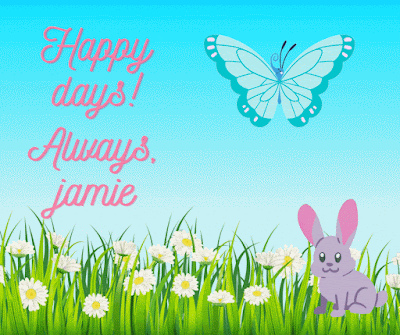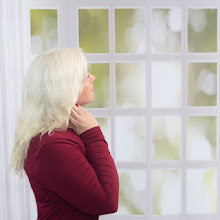To view the full series, check out our archive! As a reminder to new readers, you can start anywhere, even here as articles do not need to be read in any particular order.
So far, in the thriving (not just surviving) depression series, the 3 main, very easy, steps are:
Step One: Reframing Your Point of View. Reframe from negative to positive.
Step Two: Reading/Saying it Out Loud. Say the positive thoughts out loud.
Step Three: Stop and Smell the Roses. Associate it with an aroma that you enjoy/brings back memories.
Now, for the next topic of my Thriving with Depression Series. I previously discussed exercise and water. This time I discuss the topic of art; training your inner Michelangelo. No, you won't be painting the Sistine Chapel yet. That won't be until next time. 😆
So, why art? When we think of art our mind usually goes to one of two places: kindergarten finger painting or famous painters and sculptors such as Michelangelo and Pablo Picasso. Many of us avoid art, reserving it for those we deem to be good enough. (Whatever "good enough" may be). But it's not. It is like any other activity. Have you ever played miniature golf or gone bowling? I have as well. Just because I am not Arnold Palmer or Pete Weber doesn't mean I am going to miss out on the fun!
My own personal theory is that to be truly happy and whole we need to exercise both sides of our brain; both the left and right hemispheres. To me, using just one side of the brain is like lifting weights with your right arm and leg but forgetting your left side. To me, it doesn't make sense. The left side we attribute to the cognitive and analytical tasks. We attribute the right side to the artistic and creative side. This is an oversimplification so it is not entirely accurate. The brain is actually a very complex and sophisticated organ with more than two parts. But, for the sake of this argument, you get the idea. The point is that we are born with the ability to be both artistic and analytical. We need to be using both of these skills. Therefore, the point of using your creative muscle is not to impress your neighbor, it is to develop your brain and abilities.
Aristotle said,
"The aim of art is not to represent the outward appearance of things, but their inward significance."
And this is exactly how it is being used. The field of art therapy began many years ago as a way to treat depression and related conditions.
Art therapy is a mental health profession that enriches the lives of individuals, families, and communities through active art-making, creative process, applied psychological theory, and human experience within a psychotherapeutic relationship.
Art therapists are therapists with master's-level or higher degrees in art and therapy.
Expressive arts therapy can help to express emotions and to heal. It is especially good for children who often can't vocalize what they are feeling.
Journaling, storytelling, reading literature and poetry, as well as making life maps, videos, and memory books are all forms of expressive art therapy; this can help more mature clients review and make meaning of their lives; this is a way to tell their life stories, as well as work through and heal from traumatic experiences. The nonverbal language of creativity can help communicate inner feelings that were not previously available by simply thinking or talking about them.
In addition, in a review of 15 studies, symptoms of depression, anxiety, low mood, trauma, distress, poor quality of life, inability to cope, and low self-esteem showed improvement.
Art therapy often focuses on drawing and painting because they are easier to do in an office setting with a variety of age groups. But as briefly mentioned above, art, can include a variety of activities:
- Music- playing an instrument/writing music/writing lyrics
- Acting- this can anything from acting in a local community theatre to making your own YouTube video
- Writing- poetry, stories, books, blogs, letters. Write a two paragraph story, a poem about your kids, or even write letters to distant friends and family members. It does not have to be a 200 page book.
- Journaling- Many times we think that this is the same thing as keeping a diary. But it doesn't have to be. You can journal about something private or about a new hobby or interest you have.
- Drawing- Drawing can include drawing pictures of people or things from scratch. But you can also copy/trace pictures to help you learn, use computer assisted software to help create drawings, or create your own cartoons. With technology, the options are endless.
- Sculpting- ceramic, clay or other mediums
- Painting- this can be watercolor, acrylic, etc
- Dancing- Line dancing at your local country bar, ballroom dancing, ballet, tap, or just moving around the room to music.
- Sewing/Knitting
- Designing clothes
- Cooking/Baking/Cake Decorating
- Photography- with phones these days anyone can dabble in photography.
- Decorating/Interior Design- You can decorate a room, a room, your car, anything you own!
So, in other words, creativity can be anything from reorganizing your living room to giving your little brother a tattoo (However, please get the necessary training and certifications before doing this one.)
A recent study helped to explain more about art therapy and why it works.
Researchers Haeyan, van Hooren and Hutchemaekers (2015) set out to identify the possible effects of art therapy on the recovery process in groups of adults with personality disorders. One interesting finding was that people reported that art expression helped them focus on the present moment and identify emotional responses. Although at times this sometimes initially felt worse, this became the first step in recognizing emotions and a starting point for further healing.
There is still so much we have to learn about our brain, our abilities, and ourselves. Exactly why art is so helpful is not exactly known. Art therapy may be an excellent way to start to deal with any past hurt, trauma, depression or anxiety. Not yet ready or interested in art therapy? Then you can just select an activity that interests you and do your own thing.
But what we do know this: Art provides us another way to communicate (especially when words just don't seem enough).
- Have you hear the expression: A picture is worth a thousand words?
- We are using more than just the analytical aspects of our brain.
- Art gets us in touch with our emotions and allows us to express them.
- It is fun. Even if interior design is not your cup of tea, creating your own cartoons might be fun for you!
- It can be a healthy way to relieve stress (although I caution you not to graffiti your office)
Not ready to do anything yourself?
No problem.
Start by looking at other people's creations. Go to a local museum- art, automotive (some car designs from past years are beautiful), listen to music, read a story.
Find what inspires you. Then try it yourself!










Comments
Post a Comment